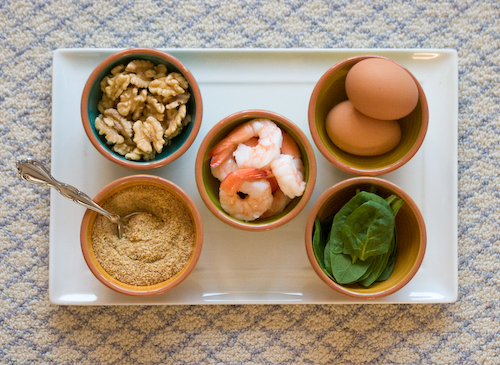Fresh Whole Wheat Flour
The quick answer: Whole grain flour should be fresh.
_______________________________________________________________________
San Francisco Bread
We’re going up to San Francisco in the morning. The Beautiful Wife will shop for Christmas ornaments with the other women of the family I grew up in. It’s a tradition. She tries to buy ornaments as gifts for the kids that recognize some achievement of the year. I like that idea, that when you decorate your tree with these collected ornaments you revisit the important steps of your life. And San Francisco is ground zero for serious bread baking, which fits into this post.
Sourdough Whole Wheat
America is finally done with Wonder Bread. The company went out of business—I guess people stopped buying. So here’s the next thing in healthful bread: Whole Wheat Sourdough. You know why whole wheat is best. So now we’ll talk about the benefits of sourdough.
Mike Pollan, the best nutrition writer of our time, came out with a book this year: Cooked, A Natural History of Transformation. It’s not as good as In Defense of Food, but it does have an interesting section on the use of sourdough.
People have eaten sourdough breads for 98% of recorded history. But in the last century we turned to modern single-specie yeasts because they were fast. Well it seems the slow action (it can take hours) of traditional sourdough yeasts had hidden benefits:
- The long fermentation of sourdough breaks down the phytic acid in grains that locks up the minerals. We need these minerals, for example, to build strong bones and avoid osteoporosis. With sourdough breads the calcium and phosphorus are more bio-available.
- The long fermentation more thoroughly breaks down the gluten proteins that are problematic for some people.
- There’s another benefit, sourdough breads have lower Glycemic Index (GI), important for prevention of diabetes.
That’s pretty much the message of 86 pages of Pollan’s writing. The last bakery I went into, I asked to speak with the manager. I had a question: Do you offer sourdough whole grain bread, and if not, when? He was baffled by my question.
But I’m encouraged to find a bakery here in California—Old Town Baking—that provides Whole Wheat Sourdough to the local Sprouts store. It’s a nice heavy bread with a tangy taste. The Beautiful Wife loves it toasted with a sharp cheese melted on top. (I should mention that it’s not 100% whole grain, just about ¾; there’s about ¼ of enriched flour.)
Fresh Whole-wheat Flour
So I have a question for Old Town Baking: How fresh is your whole grain wheat? This is the next frontier in flour because whole-wheat flour doesn’t keep well. It’s best if you grind it at the time of use because the omega-3 fats and some vitamins are attacked by oxygen in the air once the protective husk is removed.
That’s the holy grail now—sourdough whole wheat bread make with freshly ground flour. You can do this at home if you keep a sourdough starter. That’s our next step.
Healthy Changes for Grains
Grains are one of our 13 rotating topics and this is what we’ve said in the Healthy Changes so far:
#10: Bread should be whole grain with more natural fiber (see the nutrition panel) than added sugar.
#23: Eat a variety of whole grains.
#36: Use fresh whole-grain flours.
I think we’ll modify this week’s post when we have more experience cooking with sourdough starters. Maybe it’ll say: Bake your bread using sourdough starter and fresh-ground grains. I like this, that we keep improving the Healthy Changes.
 Thursday, November 7, 2013 at 7:22PM | by
Thursday, November 7, 2013 at 7:22PM | by  Skip Hellewell |
Skip Hellewell |  12 Comments |
12 Comments |  4 References | |
4 References | |  Email Article
Email Article 







